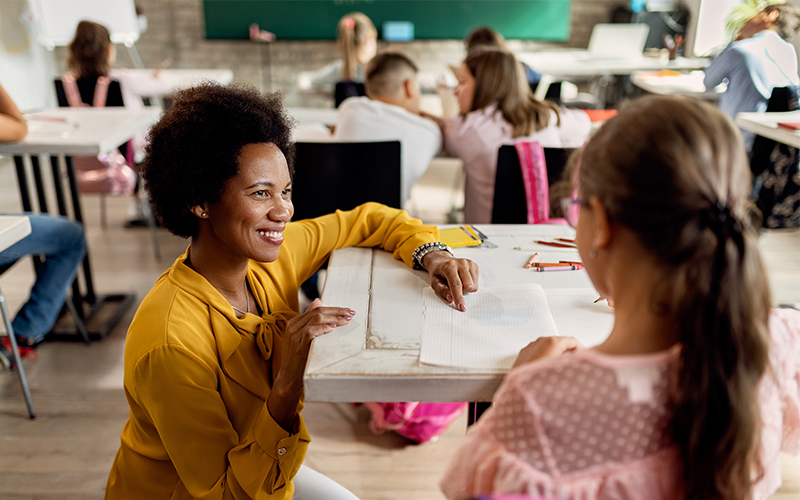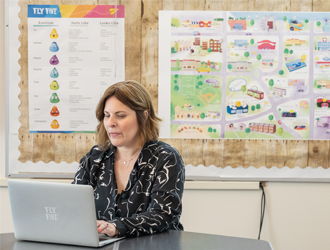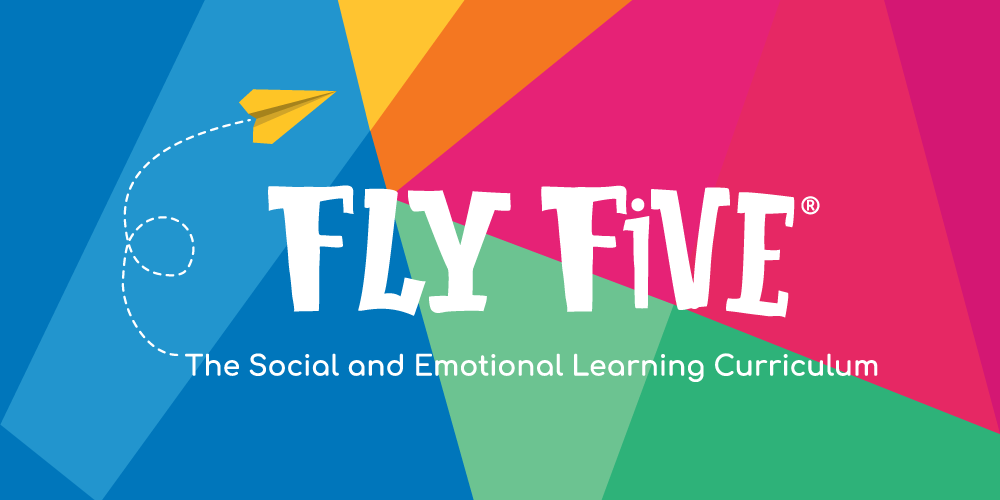Self-Awareness & Self-Control

Have you ever had the experience of realizing, mid-sentence, that you’re speaking much too loudly? Or perhaps you can recall a time when you’ve had a misunderstanding with someone— they made a joke that you didn’t find funny, or you failed to notice that they weren’t in the best spirits before you complained to them about your commute. These are instances where taking the time to notice surroundings and temper behavior appropriately—to increase self-awareness—could save you from embarrassment or avoid a misunderstanding.
Self-awareness is related to self-control, as it requires controlling our impulses, adhering to social norms, and managing our emotions to behave appropriately in the moment. It is a vital trait for us to develop as educators to ensure our actions match our intentions and for our students to develop in order to be successful in and out of school. Self-awareness is especially important for virtual learning, as comments made online can be more easily misconstrued than in person. All members of the classroom community can benefit from having the skills to assess how their actions and words may be perceived by others, which can help us to create safe, constructive learning environments across all formats.

What is Self-Awareness?
Self-awareness is the practice of being consciously aware of one’s internal state of being, as well as being aware of one’s relationships and interactions with others (Sutton, 2016). It involves maintaining an awareness of one’s feelings, thoughts, and actions and recognizing how those feelings, thoughts, and actions come across to other people (Morin, n.d.). There are two different types of self-awareness: situational/external and dispositional/internal.
• Situational/external self-awareness is a process where we compare what we are doing with the standards for behavior we’ve internalized, then make changes to behave appropriately (Sutton, 2016). It involves clearly understanding how other people view us, including our values, passions, aspirations, and fit within an environment (Eurich, 2018).
• Dispositional/internal self-awareness, sometimes referred to as self-consciousness, is the tendency in an individual to reflect on their inner experiences and their relationships with others (Sutton, 2016). It involves accurately assessing how one’s values, passions, aspirations, and fit within an environment impact oneself and others (Eurich, 2018).
Self-awareness is broadly associated with positive mental well-being; practices that strengthen self-awareness, such as self-reflection and cultivating personal insights, predict positive, beneficial outcomes (Sutton, 2016). Fostering self-awareness in turn strengthens our ability to demonstrate self-control, as self-awareness can help us understand and constrain our impulses (Miller, 2020). Self-awareness also helps to increase students’ self-esteem, for when students are self-aware, they are able to identify their strengths and advocate for themselves in areas in which they may need additional help (Morin, n.d.). Strengthening self-awareness can help to foster perspective-taking skills (Miller, 2020), and increased self-awareness is correlated with more effective communication skills and stronger relationships (Eurich, 2018). The perspective-taking and communication skills developed by self-awareness are valuable tools, for adults and students, when working on social justice issues. These skills allow us to maintain an awareness that our perspective is not the only one. When we can listen with an understanding of how our worldview impacts our interpretation of others’ experiences, and communicate our beliefs, hopes, and discomfort with respect, we can take more productive action to build a more just world.

All of these benefits tie directly into supporting students’ social and emotional growth across all five of the C.A.R.E.S. competencies.
To support self-awareness in your students, try implementing the following strategies:
• Incorporate reflective creativity. Have students journal about a variety of topics, such as how they learn best and the connection between their commitment to a task and the success of that task (Nilson, 2013). Consider having them reflect through art or writing about a conflict they’ve experienced from another person’s point of view, which allows them to practice examining how their actions may be viewed by others. Offering students the chance to reflect on their role in a given situation builds self-awareness and allows them to view their actions from a new perspective. For online learners, explore how comments can come across differently when posted versus when said in person. Make a posting for students and have them comment on it; a week or two later, revisit the posts and comments. Have students reflect on their comments and consider whether or not their comments with their intentions.
• Connect social cues/rules to students’ lives (Armstrong, 2017). Help students improve their situational self-awareness by talking openly about acceptable behavior in different situations. For example, help students understand why it is important to be quiet in a library. When they understand why something is the way it is, they are better able to assess how their behavior aligns with expectations. Spark students’ learning by asking them to think about a time when they did or did not follow a social cue/rule and how it worked out for them. You could also ask them to think of a time when someone else didn’t follow a rule or social cue. How did that person’s behavior make them feel? These prompts can help them draw connections between themselves and others and give them another perspective with which to consider their impact on others.
• Look for the “what” in difficult situations (Eurich, 2018). When faced with critical feedback or challenging emotions, encourage students to ask what they can do to improve or have a more positive experience in the future. This exercise builds self-awareness by focusing on actionable behaviors and helps students connect feedback with their behavior. Rather than ruminating on the why, focusing on the what is future-facing and lets students consider how to have a more positive impact in the future.
• Highlight assumptions (Lopez, 2017). Have students write out assumptions they have about characters in a story. When they read about a certain character, where do they assume that character was born? What do they think that character’s favorite food, color, or hobby is? Discuss why students hold these assumptions and draw connections to similar assumptions they make in real life. Distinguishing between assumptions and reality can help students become aware of their thought patterns, as well as how others may perceive them without them even realizing it. This activity builds up both internal and external self-awareness.
Self-awareness, like all other aspects of SEL, is a teachable skill. We can set the conditions for students to explore their self-awareness skills and discover the benefits of being self-aware for themselves. As we foster this skill set in students, we can also take the time to reflect on our own self-awareness skills and tendencies. When we work together to build a culture of awareness and intentionality in our classroom and school community, we can move through our teaching and learning with the confidence to succeed.
Works Cited:
Armstrong, T. (2017, February 1). 5 ways to promote self-awareness in the middle and high school classroom. American Institute for Learning and Human Development.
https://www.institute4learning.com/2017/02/01/5-ways-to-promote-self-awareness-in-the-middle-and-high-school-classroom/.
Eurich, T. (2018, January 4). What self-awareness really is (and how to cultivate it). Harvard Business Review. https://hbr.org/2018/01/what-self-awareness-really-is-and-how-to-cultivate-it.
Lopez, I. (2017). Keeping it real and relevant: Building authentic relationships in your diverse classroom. ASCD.
Miller, K. (2020, January 9). Top 11 benefits of self-awareness according to science. Positive Psychology. https://positivepsychology.com/benefits-of-self-awareness/.
Morin, A. (n.d.). The importance of self-awareness in kids. Understood for All Inc. https://www.understood.org/en/friends-feelings/empowering-your-child/self-awareness/the-importance-of-self-awareness?_ul=1*a3w7ik*domain_userid*YW1wLUtMMDRLQ3dvZ0c5MFNjSHpKTjRsWEE.
Nilson, L. (2013). Creating self-regulated learners: Strategies to strengthen students’ self-awareness and learning skills. Stylus Publishing, LLC.
Sutton, A. (2016). Measuring the effects of self-awareness: Construction of the self-awareness outcomes questionnaire. Europe’s Journal of Psychology, 12(4): 645-658. https://www.ncbi.nlm.nih.gov/pmc/articles/PMC5114878/.







